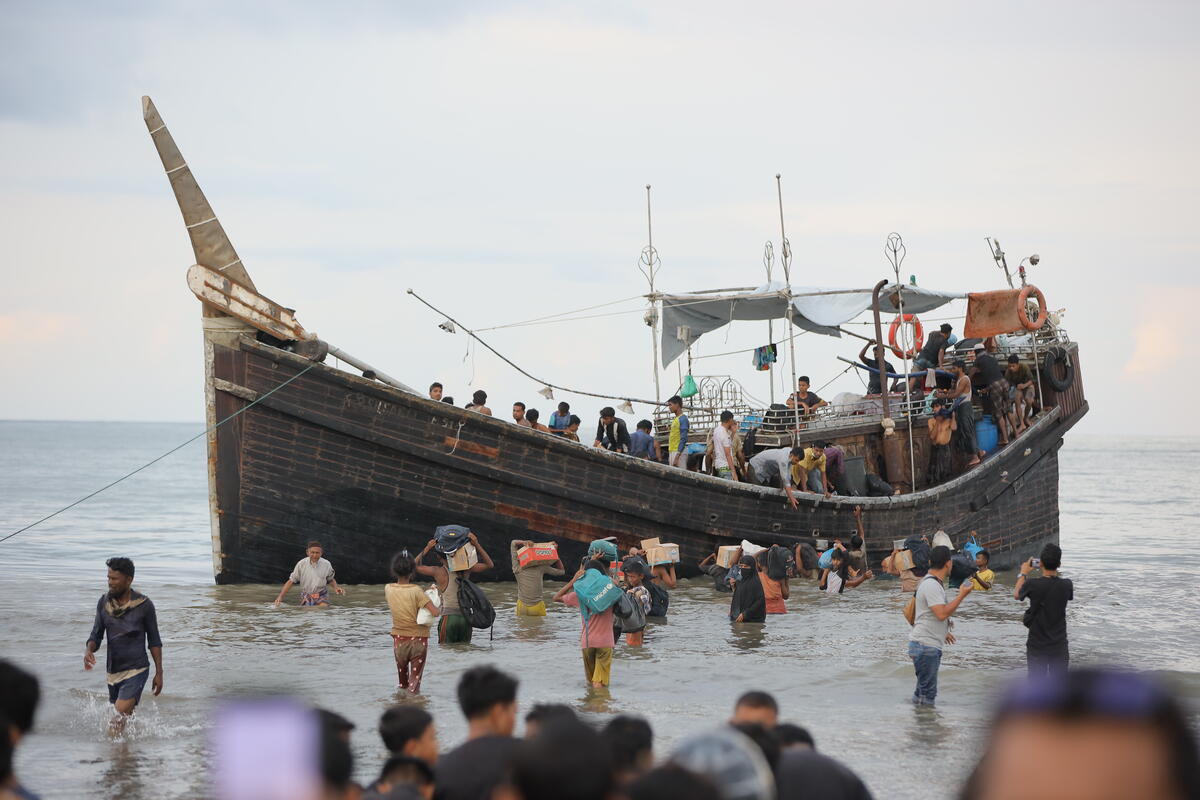Life's getting better for refugees in Bangladeshi camps
Life's getting better for refugees in Bangladeshi camps

NAYAPARA REFUGEE CAMP, Bangladesh, February 27 (UNHCR) - The main street of this camp is bustling with lively commerce - a restaurant under a colourful awning, a boy selling cucumbers, a mobile sweet shop and an open-air barbershop with all four chairs occupied by customers.
Flash back two years and Nayapara was one of the worst refugee camps in the world. Refugees lived in squalid, flimsy hovels years past their expiry date. With no proper medical care, little education and no skills training, refugees languished in idleness. Despair reigned.
"It was really one of the worst camps I have seen in my career with UNHCR," observed Asia Bureau Director Janet Lim. "Two years down the line things have changed quite a lot," she said on a visit to Nayapara earlier this month.
The freer, livelier atmosphere in Nayapara and nearby Kutupalong Camp - together home to more than 27,000 Rohingya Muslim refugees from Myanmar - reflects a new spirit of cooperation between the Bangladeshi government and the UN refugee agency.
Though UNHCR has funded the camps for 16 years, it relies on the government to administer them. It's only within the last year or so that the government has allowed UNHCR to make substantial improvements in the refugees' lives, including inviting in other UN agencies and independent aid organizations to offer services. Refugees are learning skills that should help them support themselves.
Rashid Ahmed, a 27-year-old who has been a refugee for 16 years, says he's seen a lot of changes in Nayapara Camp: a new hospital, a feeding centre for malnourished babies, and fewer "disturbances" around the camp. "Now we are in a better situation altogether," he says.
Rashid, his pregnant 20-year-old wife and their three children have benefited from one of the most striking changes. Three days ago they moved into a sturdy new metal-roofed home built with UNHCR funds received from the United Nations' Central Emergency Response Fund.
Their old shelter was so cramped they couldn't even stand upright inside. The new one is not only airy and nearly twice as big, but they also share it with fewer family members; Rashid's parents-in-law now have their own new home. The plan is to give every refugee family in both camps a new home by next year.
Back on the main street, Abdul Hakim, a 30-year-old refugee, is running a businessman's dream - an eight-seat restaurant where "as soon as one group finishes eating, another group comes and sits" and "whatever I prepare, I sell it out."
Having worked in a restaurant outside the camp, Abdul decided a month ago to take advantage of the freer atmosphere within Nayapara to go into business for himself. With the help of his wife and his five children, he's able to make much more money than in his previous job.

Not only is he his own boss now, but "I have seen some changes in my life. We can have better clothes and supply our daily needs from the market. My children are eating better because I have money to buy food [beyond the normal rations]. There's a better atmosphere now compared to previous times."
UNHCR Representative in Bangladesh Pia Prytz Phiri acknowledges there is still much to do. "You can't go from below zero to 100 in one year," she says, "but the point is that we are finally making real improvements and leaving the years of substandard conditions behind."
By Kitty McKinsey in Nayapara Refugee Camp, Bangladesh







